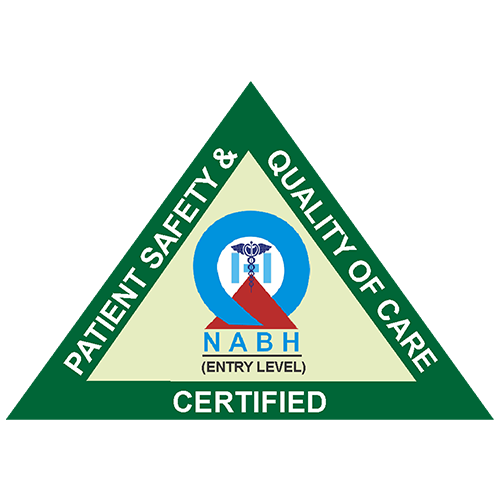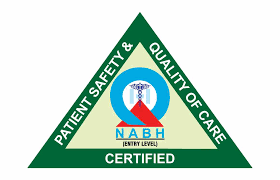Overview:
When the kidneys cease functioning properly, a treatment called dialysis is used to eliminate waste materials and extra fluid from the blood. Blood is frequently sent to a machine to be cleansed in this process.
In a typical state, the kidneys filter the blood, eliminating dangerous wastes and extra fluid, and converting them into urine that may be expelled from the body.
I need dialysis, but why?
Your kidneys may not be able to adequately clear the blood if they are not functioning properly, such as in severe chronic renal disease (kidney failure). In such cases, your body can accumulate waste materials and fluid in harmful amounts. This can result in a variety of unpleasant symptoms and can be deadly if left untreated, so dialysis helps remove undesirable chemicals and fluids from the blood.
For how long will I require dialysis?
The time period of dialysis treatment varies. Kidney failure may occasionally be a short-term issue, in which dialysis can be discontinued once your kidneys have recovered. However, renal failure patients frequently require kidney transplants. Since a kidney transplant is not always possible right away, dialysis may be required while waiting for a suitable donor kidney to become available. Dialysis may be required for the remainder of your life if a kidney transplant is not an option for you, such as if you are not well enough for a major procedure.
What happens during dialysis?
Hemodialysis and peritoneal dialysis are the two basic forms of dialysis.
Hemodialysis
The most popular and widely recognized kind of dialysis is hemodialysis. A tube is connected to a needle during the operation in your arm. Blood travels through the tube and is then filtered outside of the body before returning through a different tube to the arm. This is often done at dialysis facilities three days a week, for around four hours per session.
You might also do it at home. A home dialysis schedule may look something like this:
- Four hours a day, 4 days each week.
- Five times a week for three hours.
- Six times each week, 8 hours per night.
Peritoneal dialysis
The peritoneum, the inside lining of your belly, serves as the filter in peritoneal dialysis instead of a machine. The peritoneum functions as a filter by having hundreds of microscopic blood vessels, similar to the kidneys. A cut (incision) is made close to your belly button before treatment begins, and a catheter is placed through the cut and into the abdomen’s inside region (the peritoneal cavity). This remains in place indefinitely.
Through the catheter, fluid is pushed into the peritoneal cavity. As blood passes through the blood vessels lining the peritoneal cavity, waste products and excess fluid are drawn out of the blood and into the dialysis fluid. A few hours later, the used fluid is emptied into a bag, and new fluid is added in its place. Changing the fluid typically requires between 30 and 40 minutes and should be done four times daily.
What kind of dialysis is ideal?
Mostly you will be able to choose the type of dialysis and the place you would like to have it. For the majority of patients, both dialysis techniques are equally successful, but each has advantages and disadvantages of its own.
For Example:
- Home hemodialysis – you’ll typically need to have dialysis sessions more frequently than you would in a clinic, but you can choose a treatment plan that meets your medical needs and fits around your life.
- Haemodialysis means you’ll have 4 treatment-free days a week, but the treatment sessions last longer and you may need to visit the hospital each time.
- Peritoneal dialysis is fairly simple to perform at home and occasionally while you sleep, but it must be done each day. If you are given the option to select the kind of dialysis you get, your care team will go over the advantages and disadvantages of each choice with you to aid in your decision-making.
Complications with dialysis
While the two forms of dialysis can save your life, they also carry certain risks.
The risks of hemodialysis are:
- Low blood pressure.
- Anemia.
- Difficulty sleeping.
- High blood potassium levels.
- Muscle cramping.
- Sepsis.
- Itching.
- Pericarditis.
- Bacteremia.
- Sudden cardiac death.
- Irregular heartbeat.
The risks of peritoneal dialysis are:
- It is associated with an increased risk for infections around the catheter site in the abdominal cavity.
- Fever
- Stomach pain
- Abdominal muscle weakening.
- Weight gain
- High blood sugar due to the dextrose in the dialysate
- Hernia
Dialysis-related life
Many dialysis patients enjoy a decent quality of life. If everything else is okay, you should be able to:
- Continue studying or working out while driving
- Go swimming or on vacation
Despite the fact that dialysis can only partly restore kidney function, the majority of patients can continue receiving it for many years.
When the kidneys are not functioning properly, the body is put under a lot of stress. This implies that persons, especially the elderly and those with other health issues, who do not receive a kidney transplant risk dying while receiving dialysis. Adults under the age of 75 may only survive for two to three years after starting dialysis, whereas those starting in their late 20s might anticipate living for up to 20 years or more. However, dialysis patients’ survival rates have increased over the previous ten years, and this trend is anticipated to continue.
Giving up dialysis
Request a weight and blood pressure check from your doctor if you’re thinking about quitting your dialysis. These parameters can be used to assess the efficacy of the dialysis.
Any problems should be brought up to your doctor before therapy is stopped. Although you have the freedom to discontinue any form of therapy at any time, they might advise you to speak with a mental health professional first. Stopping dialysis will eventually cause mortality if the ailment causing the renal failure hasn’t been treated.




